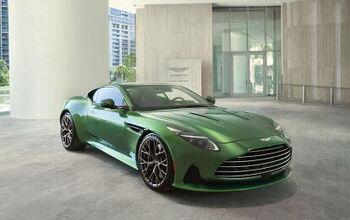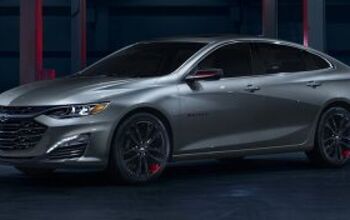Audi Set To Use Valeo's Electric Supercharger Technology
Coming soon to an Audi near you is Valeo’s electric supercharger, which will help boost engine acceleration while improving fuel economy.
Automotive News Europe reports the supercharger will likely find itself sharing space with the engine of the upcoming Audi Q7, with other automakers testing out the technology according to the French supplier’s COO Christophe Perillat-Piratoine.
The supercharger uses an electric motor to introduce more air into the engine, leading to better acceleration without the lag found in turbocharged vehicles. Valeo adds that its technology can also reduce fuel consumption by 7 percent to 20 percent, though higher costs and power consumption are drawbacks.
The technology is likely to go head-to-head with hybrid powertrains using electric motors to overcome lag, such as those found motivated the McLaren P1, Porsche 918 Spyder, Ferrari LaFerrari, and Acura NSX. The BMW i8 uses a similar setup to Valeo’s tech, with power derived from an electric starter-generator activated during engine startup to offset the turbo lag on the 1.5-liter turbo-three.
Seattle-based writer, blogger, and photographer for many a publication. Born in Louisville. Raised in Kansas. Where I lay my head is home.
More by Cameron Aubernon


































Comments
Join the conversation
Barge need MOAR acceleration. (facepalm)
"can also reduce fuel consumption by 7 percent to 20 percent" "though higher .... power consumption are drawbacks." The first and second halves of that sentence don't agree. Are they actually trying to say you need a bigger alternator? Also in their list of cars with "lag" I believe only the P1 has forced induction. Sounds like they're just name dropping.
The way I understood it is that the electric motor is used only to spin the turbocharger's wheel up to speed more quickly than can be achieved by the exhaust gas turbine alone. If you used an electric motor as the only source of power to drive a supercharger, you would probably need something on the order of a 20+ HP motor. A 20 HP motor on a 12VDC system for continuous use would require power cables twice as thick as your thumb (1250 amps!), and would be very heavy and large. This is why turbo-superchargers have largely supplanted engine-driven superchargers. The engine-driven compressor takes shaft power that could be used to drive the car, whereas the exhaust gas turbine driven compressor takes waste power from the exhaust gas, that would otherwise be lost. Add to that the inefficiencies inherent in the engine-alternator-battery-electric motor chain and you can see the end result. Claims of fuel consumption improvement should be disregarded. Think of the path that this, probably subtle and complex, technical information has to follow: - Test engineers perform the test and get results that are probably less than totally conclusive and are highly dependent on a specific set of operating conditions. - Engineering management creates .ppt file for non-technical management - Non-technical management decides to herald the test results - Public relations department (staffed by liberal arts majors) writes up a press release. - Marketing management reviews press release and edits several times - Press release given to automotive press - Reporter for "Automotive News Europe", who has minimal technical background, takes press release, rewrites it - Editor for "Automotive News Europe" edits it and makes some changes So there probably were, once upon a time, some real data on fuel consumption with/without this device, that showed a favorable result under certain conditions; but who knows what they really were.
I've looked into this and thought about it and done some rough calculations, looked at the commercial items available from time to time and the various youtube instruction videos, and come to the conclusion that you really need a mammoth blower, as far as electric blowers go, and the battery to cope to make it workable; not too good a choice for the backyard mechanic, but something AUDI could do. I can't wait to see it; when they start ending up in junkyards might make a great source of parts for the homebrew. Meanwhile: https://www.google.com/search?q=leaf+blower+supercharger&qscrl=1